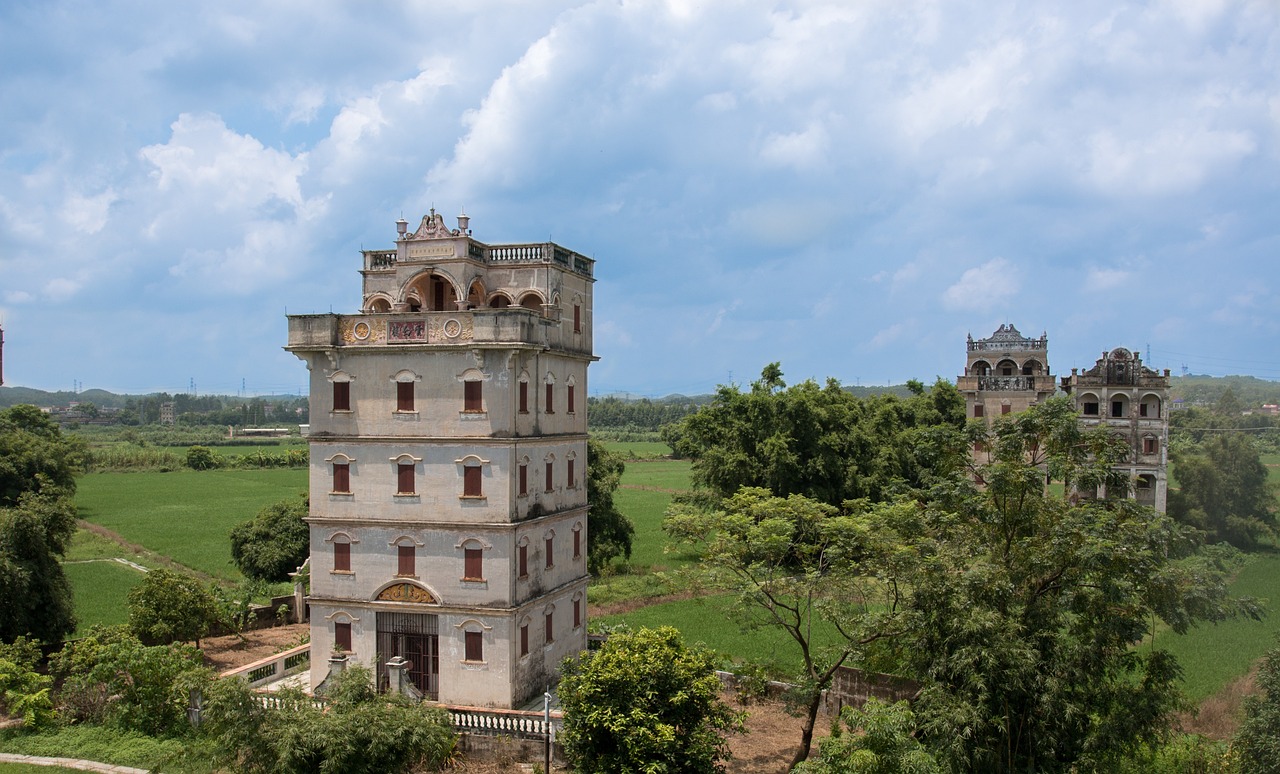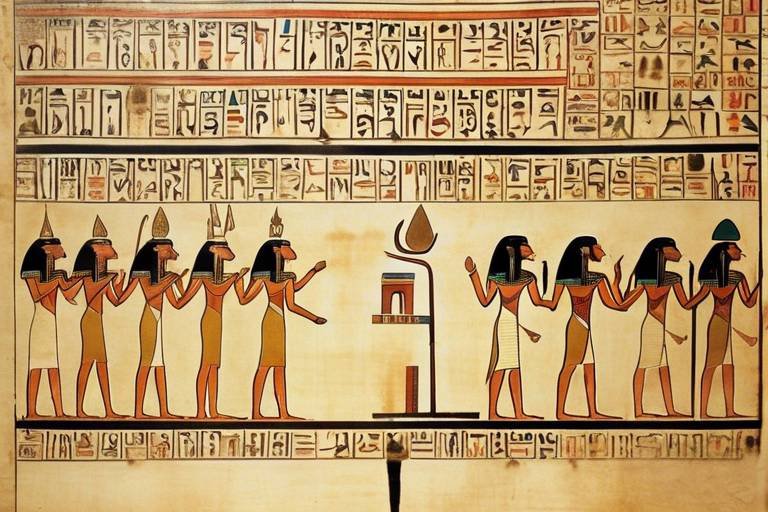The Legacy of Ancient Indian Civilizations
Ancient Indian civilizations have left an indelible mark on the world, shaping the course of history and influencing diverse aspects of human culture. From the innovative urban planning of the Indus Valley Civilization to the architectural marvels of the Mughal Empire, India's rich heritage is a testament to the ingenuity and creativity of its people. The legacy of these ancient civilizations extends far beyond the borders of the Indian subcontinent, resonating in art, philosophy, and spirituality across the globe.

Indus Valley Civilization
The Indus Valley Civilization, which thrived in the Indian subcontinent around 3300–1300 BCE, stands as a testament to the remarkable achievements of one of the world's oldest civilizations. Known for its advanced urban planning, the Indus Valley cities like Mohenjo-Daro and Harappa showcased a high level of sophistication with well-organized streets, drainage systems, and multi-story buildings. The trade networks of the Indus Valley people extended far and wide, connecting them with Mesopotamia and other regions, highlighting their economic prowess and cultural exchange.
Archaeological excavations have unearthed unique artifacts such as intricately designed seals, pottery, and sculptures, shedding light on the artistic and craft skills of the Indus Valley inhabitants. The script of the civilization, though not fully deciphered, hints at a developed system of communication and administration. The Indus Valley Civilization's decline remains a mystery, leaving historians and archaeologists intrigued by the sudden disappearance of this once-flourishing ancient society.

Vedic Period and Hinduism
The Vedic Period in ancient India marks a significant era characterized by profound religious and philosophical developments that laid the foundation for Hinduism as we know it today. During this time, the sacred texts known as the Vedas were composed, serving as the primary source of spiritual knowledge and rituals. These texts, including the Rigveda, Samaveda, Yajurveda, and Atharvaveda, provided insights into the cosmic order, rituals, and hymns dedicated to various deities.
Moreover, the Upanishads emerged during the later Vedic period, offering profound insights into the nature of reality, the self, and the ultimate truth. These philosophical texts delved into concepts such as Brahman (the ultimate reality) and Atman (the individual soul), emphasizing the interconnectedness of all beings and the pursuit of spiritual liberation.
Central to the Vedic teachings was the concept of dharma, which encompassed moral and ethical duties that individuals were expected to uphold based on their social roles and responsibilities. Dharma played a crucial role in maintaining social order and harmony within ancient Indian society, guiding individuals on the path of righteousness and virtuous living.
The emergence of Hinduism as a major world religion can be traced back to the Vedic period, where the worship of various deities, ritual sacrifices, and spiritual practices formed the core of religious life. Over time, Hinduism evolved into a diverse and multifaceted belief system, incorporating elements of mythology, philosophy, and devotional practices that continue to shape the spiritual landscape of India and beyond.

Maurya Empire and Ashoka
The Maurya Empire, one of the most significant empires in ancient Indian history, rose to power in the 4th century BCE under the leadership of Chandragupta Maurya. Known for its vast territorial expansion, the Maurya Empire reached its zenith under the rule of Emperor Ashoka, who ascended the throne in 268 BCE. Ashoka, initially known for his military conquests, underwent a transformative change after the brutal Kalinga War, leading to his adoption of Buddhism and a commitment to non-violence.
Emperor Ashoka's conversion to Buddhism had a profound impact on the Maurya Empire and beyond. He embraced the teachings of Buddha and promoted moral values, tolerance, and compassion through his rock edicts and pillars erected across the empire. Ashoka's emphasis on Dhamma, or righteous conduct, aimed to create a just and humane society, advocating for the welfare of his subjects and promoting peace.
One of Ashoka's enduring legacies is his role in spreading Buddhism beyond the Indian subcontinent. He sent emissaries to various regions, including Sri Lanka, Southeast Asia, and even as far as Greece and Egypt, to propagate the principles of Buddhism. The missionary efforts of Ashoka contributed to the global dissemination of Buddhist philosophy and ethics, shaping the spiritual landscape of Asia.
Under Ashoka's reign, the Maurya Empire flourished culturally and economically. The emperor sponsored the construction of stupas, monasteries, and pillars adorned with edicts, showcasing the empire's architectural prowess and artistic achievements. The Sanchi Stupa and the rock-cut caves at Ajanta and Ellora stand as testaments to the artistic patronage of the Mauryan era.
Ashoka's reign symbolizes a period of moral introspection and social welfare in ancient India. His legacy as a benevolent ruler who prioritized the well-being of his subjects continues to inspire generations, highlighting the enduring impact of his reign on Indian history and the spread of Buddhist ideals across the world.

Gupta Empire and Golden Age
The Gupta Empire, often referred to as the Golden Age of India, was a period of remarkable advancements in various fields that left a lasting impact on Indian civilization. During this time, which spanned from around 320 to 550 CE, the Gupta rulers fostered a flourishing of arts, science, and literature that contributed significantly to the cultural heritage of the subcontinent.
One of the most notable achievements of the Gupta Empire was in the realm of mathematics. Indian mathematicians made groundbreaking discoveries during this period, including the concept of zero, the decimal system, and the numerical value of pi. These innovations laid the foundation for modern mathematics and had a profound influence on the development of science and technology worldwide.
Astronomy also thrived under Gupta patronage, with scholars making important observations and calculations that advanced the understanding of celestial bodies and their movements. The Gupta astronomers accurately determined the length of a year and the Earth's circumference, showcasing their sophisticated knowledge of the cosmos.
Furthermore, the Gupta Empire was a hub of medical knowledge and practices. Physicians during this era made significant strides in surgery, pharmacology, and diagnostics, laying down the principles of Ayurveda that continue to be practiced in India and beyond to this day.
Art and literature reached new heights during the Golden Age, with the Gupta period witnessing a renaissance in sculpture, painting, and poetry. The Ajanta and Ellora caves stand as testament to the exquisite craftsmanship of Gupta artisans, showcasing intricate carvings and frescoes that depict scenes from Hindu mythology and daily life.
Moreover, the Gupta rulers were patrons of learning and scholarship, attracting scholars and intellectuals from far and wide to their courts. The establishment of universities and centers of higher education promoted the exchange of ideas and the preservation of knowledge, fostering a climate of intellectual curiosity and creativity.
In conclusion, the Gupta Empire's Golden Age was a time of unparalleled cultural and intellectual achievement that left an indelible mark on Indian history. The legacy of this period continues to inspire and influence generations, serving as a testament to the enduring spirit of innovation and creativity that defines the rich tapestry of ancient Indian civilizations.

Chola Dynasty and Maritime Trade
The Chola Dynasty, a powerful South Indian empire that rose to prominence during the medieval period, was renowned for its exceptional maritime trade prowess. The Cholas established a vast network of trade routes that extended across the Indian Ocean, connecting the bustling ports of South India with distant lands. Through strategic naval expeditions and skilled navigation, the Cholas dominated maritime trade, facilitating the exchange of goods, culture, and ideas with regions as far as Southeast Asia.
One of the key factors contributing to the Chola Dynasty's success in maritime trade was their advanced shipbuilding techniques and navigational skills. Chola merchants utilized sturdy, seafaring vessels equipped with sails that allowed them to traverse long distances efficiently. These ships were instrumental in strengthening the Chola Empire's economic influence and establishing trade relationships with foreign powers.
The maritime trade activities of the Chola Dynasty not only boosted their economy but also facilitated the spread of Indian culture and influence to distant shores. Chola merchants engaged in the exchange of commodities such as spices, textiles, precious stones, and ceramics, contributing to the flourishing trade networks that connected diverse civilizations. This cultural exchange played a significant role in shaping the Chola Dynasty's legacy as a maritime power in the Indian Ocean region.
Moreover, the Chola Dynasty's maritime trade expeditions were not solely driven by economic motives but also served strategic and diplomatic purposes. By expanding their naval presence and establishing strong maritime connections, the Cholas asserted their political influence and solidified alliances with neighboring states. The Chola naval fleet, renowned for its strength and agility, played a pivotal role in safeguarding trade routes and protecting the empire's maritime interests.

Mughal Empire and Architectural Marvels
The Mughal Empire, renowned for its architectural marvels, left an indelible mark on the Indian subcontinent. The grandeur of Mughal architecture is epitomized by iconic structures like the majestic Taj Mahal, a symbol of eternal love and one of the New Seven Wonders of the World. Commissioned by Emperor Shah Jahan in memory of his beloved wife Mumtaz Mahal, this white marble mausoleum is a masterpiece of symmetry and intricate craftsmanship.
Another architectural gem from the Mughal era is the Agra Fort, a UNESCO World Heritage Site that served as the main residence of the emperors. Its imposing red sandstone walls enclose a complex of palaces, mosques, and gardens, reflecting a blend of Persian, Indian, and Islamic architectural styles. The intricate carvings, delicate marble inlays, and sprawling courtyards within the fort showcase the opulence and sophistication of Mughal design.
Furthermore, the Mughals were prolific builders of gardens, known as charbagh, which symbolized paradise on earth. These meticulously planned gardens, with their symmetrical layout and flowing water features, provided a serene retreat for the royalty amidst the bustling cities. The Shalimar Bagh in Srinagar and the Nishat Bagh in Kashmir are prime examples of Mughal garden design, showcasing a harmonious fusion of nature and architecture.
One cannot overlook the architectural brilliance of the Mughal Empire without mentioning the Humayun's Tomb in Delhi, a precursor to the Taj Mahal and a UNESCO World Heritage Site. Constructed for Emperor Humayun, the tomb's innovative use of red sandstone and white marble, coupled with its expansive Mughal garden setting, set the standard for future Mughal architectural endeavors.

British Colonial Rule and Independence Movement
During the British colonial rule in India, which lasted for nearly 200 years, the country underwent significant political, social, and economic transformations. The British East India Company initially established control over parts of India for trade purposes, gradually extending its influence through conquests and treaties. The colonial period brought about massive changes in Indian society, with the imposition of British laws, administrative systems, and the introduction of English education.
As the Indian independence movement gained momentum in the late 19th and early 20th centuries, various leaders emerged to challenge British rule and advocate for self-governance. Prominent figures like Mahatma Gandhi, Jawaharlal Nehru, and Subhas Chandra Bose played crucial roles in mobilizing the masses and organizing protests against colonial oppression.
The non-violent resistance led by Mahatma Gandhi, including movements like the Salt March and Quit India, showcased the power of peaceful civil disobedience in confronting British authority. These acts of defiance not only garnered international attention but also united Indians from diverse backgrounds in the struggle for freedom.
Following World War II, the British government faced mounting pressure to grant independence to India, culminating in the partition of the subcontinent in 1947. The partition led to the creation of India and Pakistan as separate nations, accompanied by widespread violence and mass migrations as communities were divided along religious lines.
The independence movement marked a watershed moment in Indian history, symbolizing the triumph of the collective will of the people over colonial rule. The struggle for independence left a lasting legacy of resilience, unity, and the importance of democracy and human rights in shaping the future of the nation.

Modern India and Cultural Diversity
Modern India stands at the crossroads of tradition and innovation, blending ancient customs with modern advancements. The country's cultural diversity is a vibrant tapestry woven with myriad threads of languages, religions, and traditions. From the bustling streets of Mumbai to the serene backwaters of Kerala, India offers a kaleidoscope of experiences that captivate the senses.
India's economic growth has propelled it onto the global stage, with a booming tech industry and a burgeoning middle class. The country's rich history is reflected in its architecture, from the ancient temples of Hampi to the colonial-era buildings of Kolkata. Each region of India boasts its own distinct cuisine, from the spicy curries of the north to the coconut-infused dishes of the south.
Technological advancements have revolutionized various sectors in India, from healthcare to agriculture. The country's space program has made significant strides, with successful missions to Mars and the moon. India's film industry, Bollywood, is renowned worldwide for its colorful musicals and talented actors.
Despite its progress, India faces challenges such as poverty, environmental degradation, and social inequality. The caste system, though officially abolished, still influences societal dynamics. However, initiatives promoting education, women's empowerment, and sustainable development are reshaping the country's future.
India's cultural diversity is a source of strength and resilience, uniting people from different backgrounds in a shared heritage. Festivals like Diwali, Holi, and Eid bring communities together in celebration. The arts flourish in India, with classical dance forms, music, and literature continuing to thrive.
As India navigates the complexities of the 21st century, its cultural richness remains a beacon of inspiration for the world. The country's ability to embrace change while honoring its past is a testament to the enduring legacy of ancient Indian civilizations.

Global Influence and Diaspora
When exploring the global influence and diaspora of ancient Indian civilizations, one cannot overlook the profound impact they have had on various aspects of world culture. From art to spirituality, cuisine to yoga, the legacy of India has transcended borders and resonated with people across the globe.
One of the most notable contributions of ancient Indian civilizations is in the realm of spirituality. The teachings of Hinduism, Buddhism, and other Indian philosophies have inspired seekers and spiritual practitioners worldwide. The practice of yoga, originating in ancient India, has become a global phenomenon, promoting physical well-being and inner peace.
Indian cuisine, with its rich flavors and diverse regional specialties, has captivated taste buds around the world. The use of aromatic spices, vibrant colors, and unique cooking techniques have made Indian food a favorite among food enthusiasts everywhere.
Furthermore, Indian art and architecture have left an indelible mark on the global artistic landscape. The intricate carvings of temples, the vibrant paintings of gods and goddesses, and the majestic structures like the Taj Mahal continue to awe and inspire people from all walks of life.
The Indian diaspora, spread across continents, has played a significant role in connecting cultures and fostering cross-cultural exchanges. Indian communities abroad have preserved their traditions while embracing the local customs, creating a fusion of cultures that enriches the global tapestry.
In essence, the global influence of ancient Indian civilizations is a testament to the enduring legacy of a civilization that thrived thousands of years ago. Its impact can be felt in the arts, spirituality, cuisine, and the interconnectedness of people worldwide.
Frequently Asked Questions
- What was the significance of the Indus Valley Civilization?
The Indus Valley Civilization was one of the world's oldest urban societies, known for its advanced city planning, sophisticated drainage systems, and intricate trade networks. It flourished around 3300–1300 BCE in the Indian subcontinent, leaving behind unique artifacts and evidence of a complex social structure.
- How did Hinduism evolve during the Vedic period?
Hinduism traces its roots to the Vedic period, characterized by the composition of sacred texts like the Vedas and Upanishads. This era saw the development of philosophical concepts, rituals, and the idea of dharma, laying the foundation for one of the world's major religions.
- What were the achievements of the Gupta Empire's Golden Age?
The Gupta Empire's Golden Age was marked by remarkable advancements in various fields such as mathematics, astronomy, medicine, and literature. Scholars like Aryabhata made significant contributions, and the period witnessed a flourishing of arts and sciences, leaving a lasting impact on Indian culture.
- How did the Mughal Empire influence Indian architecture?
The Mughal Empire left a lasting architectural legacy in India, exemplified by iconic structures like the Taj Mahal. With a fusion of Persian, Indian, and Islamic styles, Mughal architecture showcased intricate designs, intricate domes, and intricate carvings, reflecting the empire's cultural richness.
- What role did Mahatma Gandhi play in India's independence movement?
Mahatma Gandhi, known as the father of the nation, led India's nonviolent struggle against British colonial rule through civil disobedience and peaceful protests. His philosophy of Satyagraha inspired millions and played a pivotal role in India gaining independence in 1947.



















